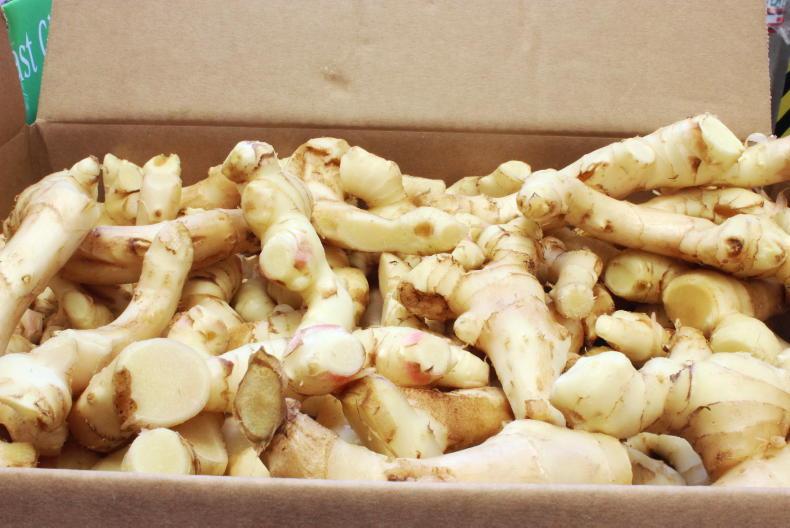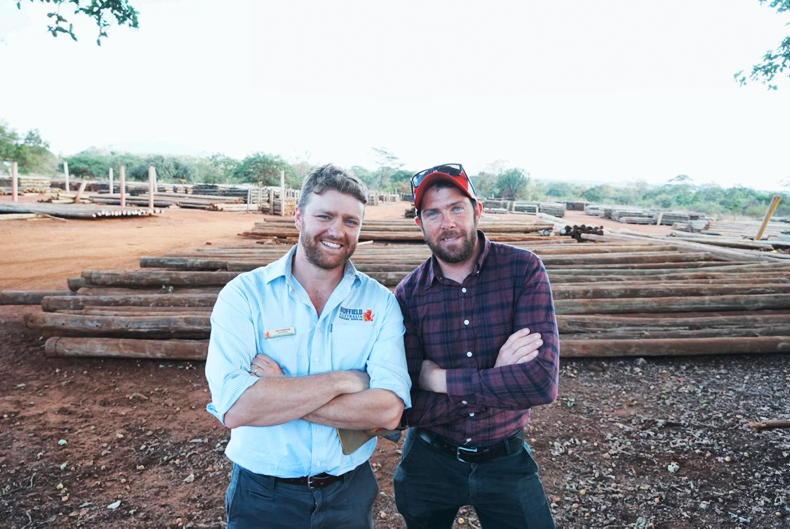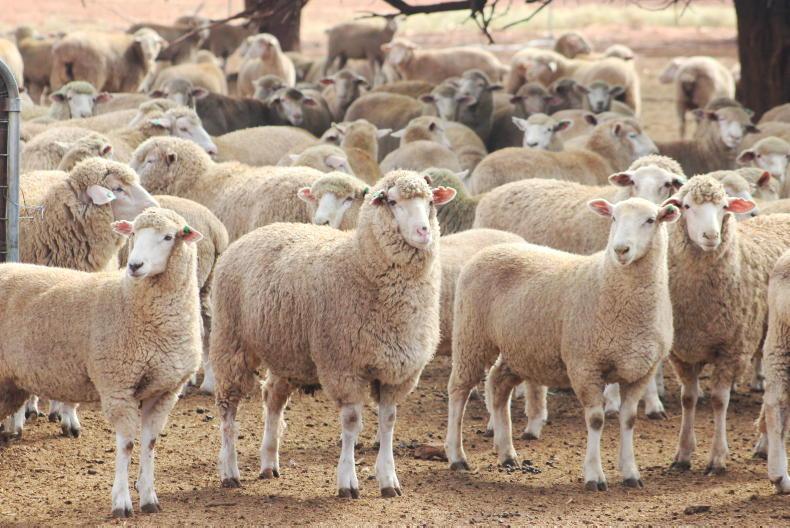One of the very unusual crops that the Irish Tillage and Land Use Society visited in Queensland in January 2020 was ginger.
I certainly knew nothing about the crop before that, other than my knowledge of ginger as a seasoning and the classical gingernut biscuit.

Jayde Weston explains the basics of ginger production, presentation and marketing to the ITLUS group.
We met up with Paul Hinder at Nutrien Ag Solutions near Yandina. He took us to a farm run by Mark, Craig and Jayde Weston which produces ginger very successfully.
There we met with Jayde in their packing house and she taught us that ginger is a very interesting and profitable crop.
The crop
On one of our previous visits, we had been told that ginger is a crop always looking for an excuse to die.

A clump of brown ginger packed for distribution and sale at Weston Agriculture P/L.
Jayde said the crop does not like too much hardship in terms of environmental or soil stresses and they can affect it.
However, these are managed through the conditioning of the soil in the years when the crop is not being grown.
It was obvious from what Jayde told us that they see ginger as a very profitable crop option.
Ginger itself is actually a plant rhizome. While we did not manage to see the crop growing, it is a bit like a shorter version of miscanthus. However, we saw lots of harvested rhizomes in the packing house.
The rhizome clump might be described as a bumpy hen’s foot and not that dissimilar to a rhizome of miscanthus. It is the rhizome that is planted and harvested.
Rotation
There are certainly a number of disease concerns and defects with the crop. For this reason, Jayde told us at the rotation they use is a maximum of one in five years.

A poster on the wall of the pack house outlining a range of ginger defects that should not be packed for sale.
Interestingly, the other four years are not used for cropping but rather for the production of green manures that help to condition the soil using species that do not conflict with the ginger itself.
Good soil health is seen as key to successful production.
The profitability of the crop is the major reason why other crops are not grown in the intervening rotational slots – it can carry all five years. This provides a great opportunity to have the land in top-class condition where the ginger is to be grown. This is essential for both crop health and yield.
Harvesting
For them, harvesting begins after about 11 months post planting (earlier on other farms). Those early initial harvests can yield be up to 15t/ha. The later-harvested portion of the crop that is left to grow on can produce yields of up to 45t/ha within the year, so it shows vigorous crop growth.

A box packed with Australian Quality Ginger from Weston Agriculture ready for distribution.
After harvesting, the rhizomes are taken into store and cleaned for sorting and packing.
Different parts of the rhizome clumps tend to be either white fleshed or somewhat brown or ginger coloured. The white parts of the rhizome are the younger growth and while these can be sold, they carry a milder flavour. The darker coloured area is the older part of the rhizome and this tends to have the strongest flavour.
During harvest, the crop tends to be washed, sorted, boxed and moved to market within the same day.
One of the very unusual crops that the Irish Tillage and Land Use Society visited in Queensland in January 2020 was ginger.
I certainly knew nothing about the crop before that, other than my knowledge of ginger as a seasoning and the classical gingernut biscuit.

Jayde Weston explains the basics of ginger production, presentation and marketing to the ITLUS group.
We met up with Paul Hinder at Nutrien Ag Solutions near Yandina. He took us to a farm run by Mark, Craig and Jayde Weston which produces ginger very successfully.
There we met with Jayde in their packing house and she taught us that ginger is a very interesting and profitable crop.
The crop
On one of our previous visits, we had been told that ginger is a crop always looking for an excuse to die.

A clump of brown ginger packed for distribution and sale at Weston Agriculture P/L.
Jayde said the crop does not like too much hardship in terms of environmental or soil stresses and they can affect it.
However, these are managed through the conditioning of the soil in the years when the crop is not being grown.
It was obvious from what Jayde told us that they see ginger as a very profitable crop option.
Ginger itself is actually a plant rhizome. While we did not manage to see the crop growing, it is a bit like a shorter version of miscanthus. However, we saw lots of harvested rhizomes in the packing house.
The rhizome clump might be described as a bumpy hen’s foot and not that dissimilar to a rhizome of miscanthus. It is the rhizome that is planted and harvested.
Rotation
There are certainly a number of disease concerns and defects with the crop. For this reason, Jayde told us at the rotation they use is a maximum of one in five years.

A poster on the wall of the pack house outlining a range of ginger defects that should not be packed for sale.
Interestingly, the other four years are not used for cropping but rather for the production of green manures that help to condition the soil using species that do not conflict with the ginger itself.
Good soil health is seen as key to successful production.
The profitability of the crop is the major reason why other crops are not grown in the intervening rotational slots – it can carry all five years. This provides a great opportunity to have the land in top-class condition where the ginger is to be grown. This is essential for both crop health and yield.
Harvesting
For them, harvesting begins after about 11 months post planting (earlier on other farms). Those early initial harvests can yield be up to 15t/ha. The later-harvested portion of the crop that is left to grow on can produce yields of up to 45t/ha within the year, so it shows vigorous crop growth.

A box packed with Australian Quality Ginger from Weston Agriculture ready for distribution.
After harvesting, the rhizomes are taken into store and cleaned for sorting and packing.
Different parts of the rhizome clumps tend to be either white fleshed or somewhat brown or ginger coloured. The white parts of the rhizome are the younger growth and while these can be sold, they carry a milder flavour. The darker coloured area is the older part of the rhizome and this tends to have the strongest flavour.
During harvest, the crop tends to be washed, sorted, boxed and moved to market within the same day.














SHARING OPTIONS